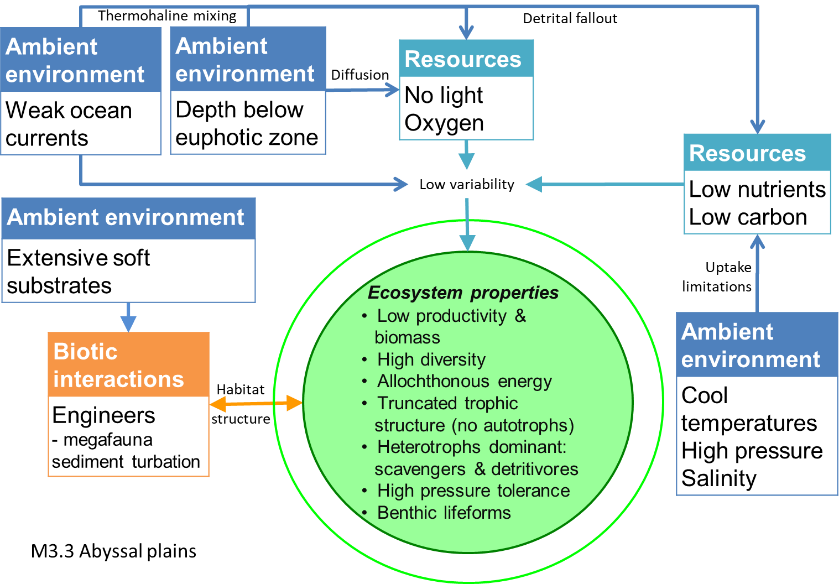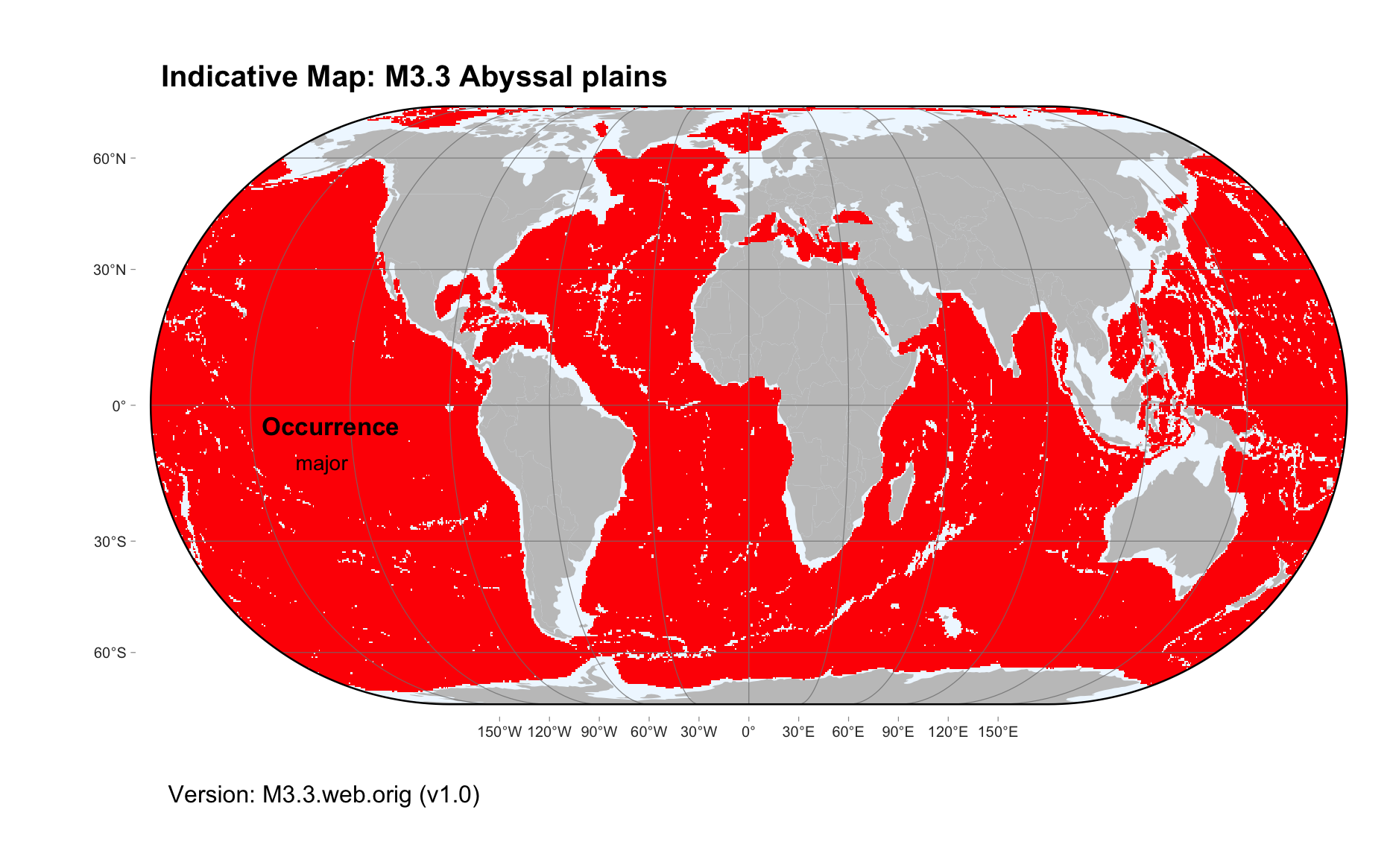Global ecosystem typology
Alternative site for the Global ecosystem typology with additional information for ecosystem profiles and indicative maps.
This site is maintained by jrfep
M3.3 Abyssal plains
Biome: M3. Deep sea floors biome
Contributors:
(texts)
These ecosystems on the very deep seafloors (3000-6000m) of all oceans support a low biomass but high diversity of small invertebrates and microbes, along with larger crustaceans, demersal fish and echinoderms like starfish. Tracks and burrows of larger organisms in fine sediments that may be up to thousands of metres thick, structure habitat for smaller invertebrates. The absence of light, scarcity of food, and extreme hydrostatic pressures limit the density and biomass of organisms as well as the interactions among them. Inaccessible and little known, exploration of these ecosystems continue to reveal large numbers of species new to science.
Key Features
Largest benthic heterotrophic system, mostly of fine sediment, supporing high biodiversity of small organisms (microbes, meio- and macro-fauna).
Overview of distribution
Seafloor between 3000 and 6000 m depth.
Profile versions
- v1.0 (2020-01-20): E Ramirez-Llodra; DA Keith
- v2.0 (2020-05-28): E Ramirez-Llodra; IG Priede; DA Keith
- v2.01 ():
- v2.1 (2022-04-06): E Ramirez-Llodra; IG Priede; DA Keith Full profile available at official site
Main references
Selected references for this functional group:
Smith CR, De Leo FC, Bernardino AF, Sweetman AK, Martinez Arbizu P (2008) Abyssal food limitation, ecosystem structure and climate change Trends in Ecology and Evolution 23: 518-528 DOI:10.1016/j.tree.2008.05.002
Diagrammatic assembly model

Maps
Maps are indicative of global distribution patterns are not intended to represent fine-scale patterns. The maps show areas of the world containing major (coloured red) or minor occurrences (coloured yellow) of each ecosystem functional group. See general notes on maps.
There are 2 alternative versions of the indicative map for this functional group, please compare description and sources below.
M3.3.IM.orig_v1.0
Datasets
- GSFM-2014
Map references
Harris PT, Macmillan-Lawler M, Rupp J, Baker EK (2014) Geomorphology of the oceans. Marine Geology 352: 4-24. 10.1016/j.margeo.2014.01.011
M3.3.web.orig_v1.0

Datasets
- GSFM-2014
Map references
Harris PT, Macmillan-Lawler M, Rupp J, Baker EK (2014) Geomorphology of the oceans. Marine Geology 352: 4-24. 10.1016/j.margeo.2014.01.011
Check: the Glossary / Profile structure / the public document